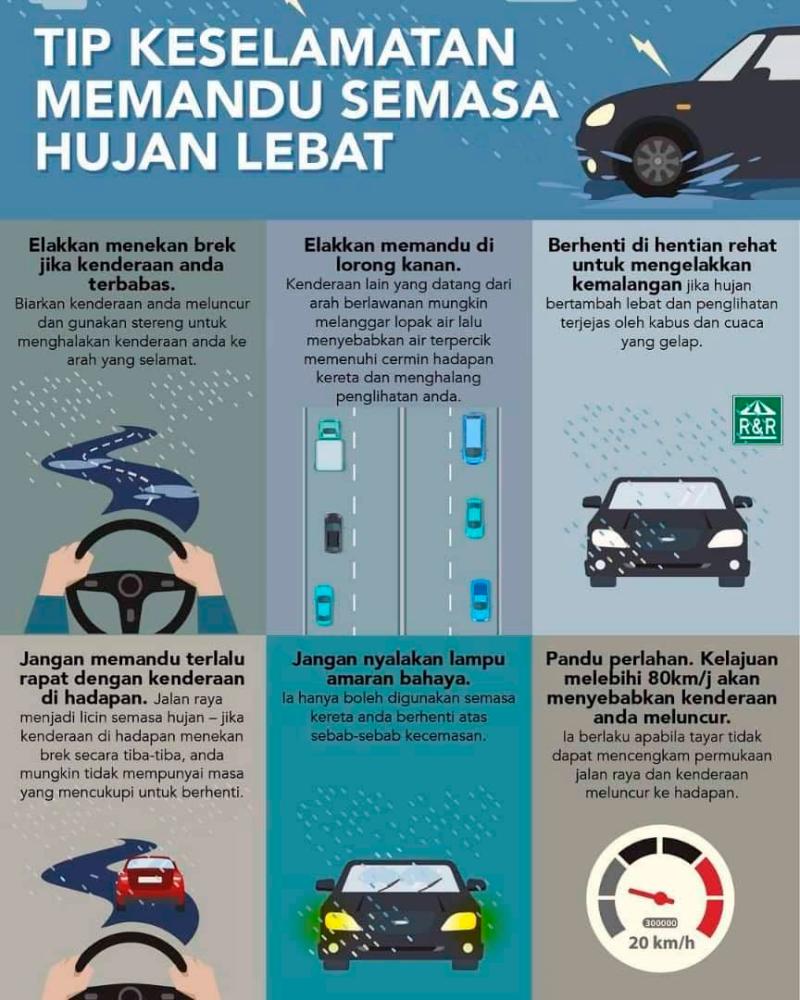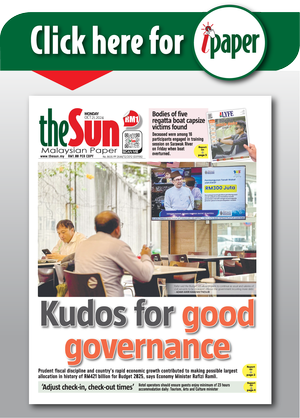PETALING JAYA: The transport ministry, in collaboration with the road safety department (JKJR), has once again emphasized the importance of exercising caution while driving in heavy rain—a common occurrence during evening weather these days.
The advisory is complemented by safety tips presented through an infographic.
Among the recommendations is maintaining a safe following distance by not tailgating and reducing speed in rainy conditions, advising drivers to keep speeds below 80 km/h.
The rationale behind the former is to provide ample reaction time and avoid collisions in the event of sudden braking by the vehicle in front.
The latter suggestion stems from the diminished tire grip in wet conditions, making it harder to control the effects of aquaplaning at higher speeds.
Additional guidance includes refraining from driving on the rightmost overtaking lane during or after heavy rain to minimize the risk of water splashing onto the car.
However, acknowledging the practicality of avoiding the overtaking lane altogether may be challenging.
Another challenging but crucial suggestion is to resist slamming on the brakes if the vehicle loses traction. Instead, the advice is to allow the slide and use steering to assess traction until the tires regain grip. Overcoming the instinct to immediately apply brakes in such situations can be difficult.
Practical advice extends to pulling over and taking a break at the nearest rest area if the rain intensifies, waiting for improved conditions. Lastly, a reiterated piece of counsel emphasizes not using hazard lights in the rain.
Hazard lights are intended for emergencies only and not as “double signals,“ a misconception in popular language. Activating hazard lights can cause confusion for following motorists and add unnecessary stress due to reduced visibility.
While this advice may be overlooked by some, it remains a vital reminder that is likely to be reiterated in the future.









